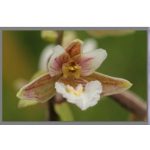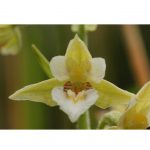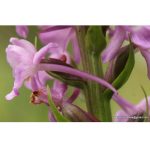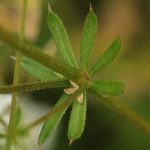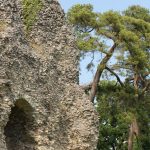Sarah and Ken White led a walk at Greywell Fen Reserve on Wednesday 20 July. A group of ten met at the Pumping Station in the morning. The previous few days had been very hot, but thankfully the morning of our meeting was comfortably cooler. The Hampshire and Isle of Wight Wildlife Trust Reserve Manager kindly arrived to unlock the gate for us, avoiding an otherwise precarious climb. The meadows at this north-eastern end of the reserve require a permit for access and were new to most of the group. There was a wonderful display of flowers, most notably Marsh Helleborine Epipactis palustris, including many plants of the uncommon white form var. ochroleuca. These were a little past their best after the recent warm spell but the Marsh Fragrant Orchid Gymnadenia densiflora was in full flower and smelling delicious. We noted a number of marsh orchids, probably Southern Marsh Dactylohriza praetermissa, as well as Common Twayblade Neottia ovata. The Fen Bedstraw Galium uliginosum was identified by the mucronate tips to the leaves and the backward-pointing prickles on the leaf margins, the whole plant feeling very rough to the touch. A St John’s-wort with a square stem and leaves lacking perforations was found to be Imperforate St. John’s-wort, Hypericum maculatum. A single flower of Blue Fleabane Erigeron acris was spotted. As we wandered through the meadow, two juvenile Common Buzzard called continuously and a Green Woodpecker was heard. Butterflies included Marbled and Green-veined White, Brimstone, Red Admiral, Small Skipper, Comma and Meadow Brown. Aware that there was some distance to cover before lunchtime, we reluctantly tore ourselves away from this beautiful part of the reserve, pausing to admire a fine specimen of pink and white striped Hairy Bindweed, Calystegia pulchra on the roadside.
We then walked through the main part of the reserve, past the mill pond and alongside the river to the pub for lunch. In the woodland we disturbed a family of recently-fledged Song Thrushes and by the Mill pond a Spotted Flycatcher was perching on a dead tree. Huge tussocks of Greater Tussock-sedge Carex paniculata lined the path and we saw Hedge Woundwort Stachys sylvatica, Marsh Woundwort S. palustris as well as their hybrid S. x ambigua. Across the pond a Reed Warbler left the reeds carrying a faecal sac – proof of breeding; everyone was able to delight in the 4-banded Longhorn Beetle Leptura quadrifasciata feasting on hogweed pollen but only those at the rear of the group were lucky enough to see a female Grey Wagtail. The river had a covering of Water Fern Azolla filiculoides and we saw Brown Hawker and Banded Demoiselle as well as mating Large Red damselflies. Fledged Swallows and House Martins perched on the wires in the village.
After a fine lunch we walked down the canal to Odiham Castle, pausing to reflect on the importance to bats of the Greywell Tunnel and to admire the stands of Marestail Hippuris vulgaris. A family of Little Grebes could be seen swimming under water since the water was so incredibly clear. In the increasing heat, we decided on a return route to the Pumping Station in the shade of the canal path rather than across the meadows.
Report by Sarah and Ken White
Pictures by Ken White

